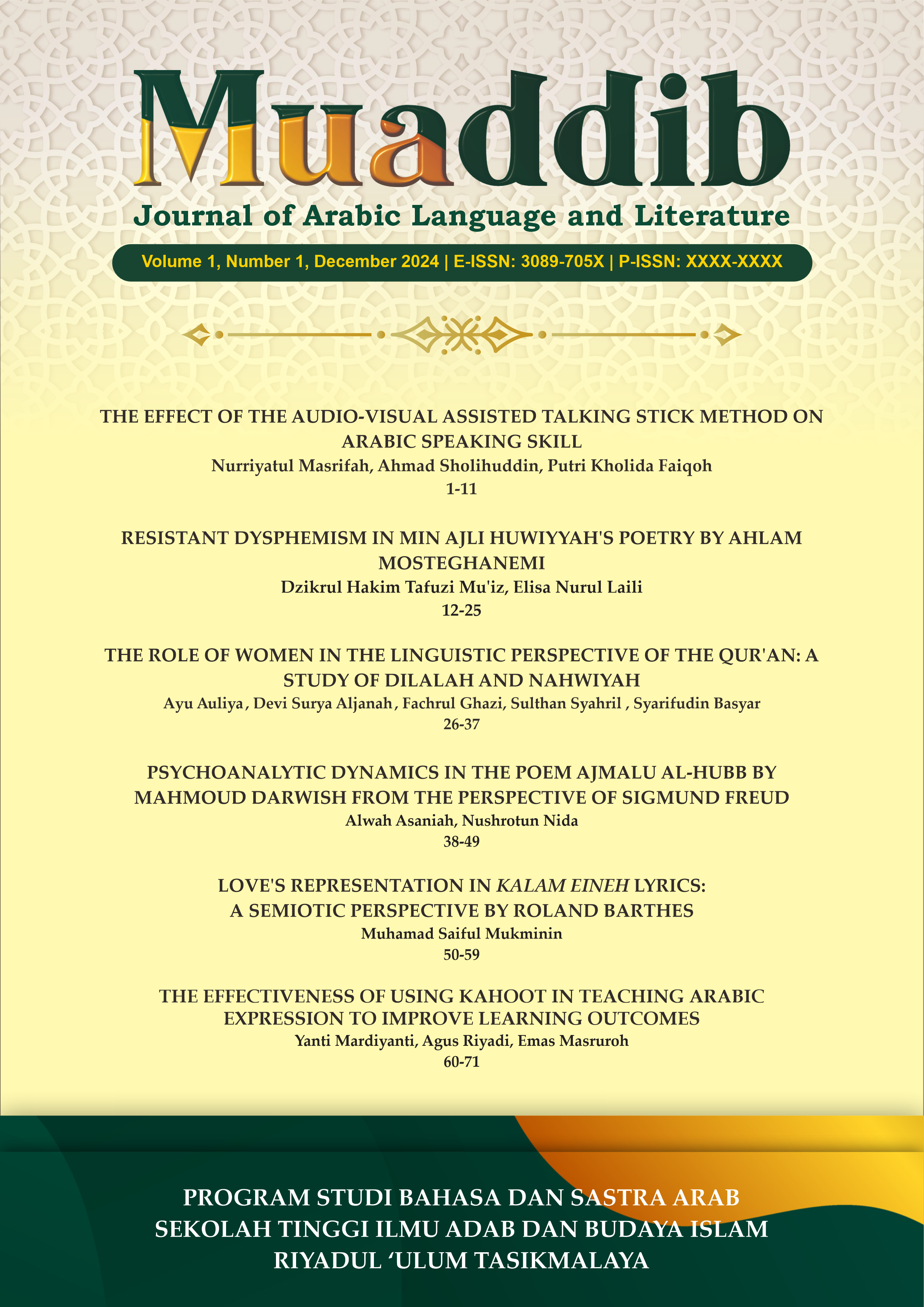THE EFFECT OF THE AUDIO-VISUAL ASSISTED TALKING STICK METHOD ON ARABIC SPEAKING SKILL
PENGARUH METODE TALKING STICK BERBANTUAN AUDIO - VISUAL TERHADAP MAHARAH KALAM
DOI:
https://doi.org/10.51190/muaddib.v01i01.8Keywords:
Talking stick, audio visual, maharah kalamAbstract
This study aims to determine the effect of the application of audio-visual-assisted talking stick method in developing students' maharah kalam. This research uses a quantitative approach with a quasi-experimental method. The research instruments included observation, tests and documentation, with data analysis using Chi-Quadrat normality test, homogeneity test and independent sample T- Test. The results showed that the average value of the control class pretest was 55.2 and increased to 77.2 in the post-test. Meanwhile, the average value of the experimental class pretest was 54.6, which then increased to 81.4 in the post-test. The t-count value of 3.695 with a significance value of 0.001 shows that t> t table, so H0 is rejected and Hais accepted. Thus, there is a significant difference between the experimental group and the control group. The conclusion of this study is that the Talking Stick learning method assisted by audio-visual media has a positive and significant influence on the development of maharah kalam of seventh grade students at MTsN 2 Blitar City. The impact of applying this method includes increased student engagement in learning, strengthened active communication skills, and increased student confidence in using Arabic.
Downloads
Published
Issue
Section
License
Copyright (c) 2024 Muaddib: Journal of Arabic Language and Literature

This work is licensed under a Creative Commons Attribution-ShareAlike 4.0 International License.










